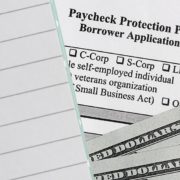Understanding the Financial Reporting Framework for Small- and Medium-Sized Entities
Contributed by: Kimberly McLaughlin, CPA – Supervisor
Accounting frameworks provide information on how to measure, recognize, present, and disclose the information included in an entity’s financial statements. There are various frameworks that businesses can elect to adopt, depending on their financial needs. Many businesses utilize Generally Accepted Accounting Principles (GAAP) their financial statements. However, in 2013, the American Institute of Certified Public Accountants (AICPA) issued the Financial Reporting Framework for Small- and Medium-Sized Entities (FRF for SMEs). Per the AICPA, “It delivers financial statements that provide useful, relevant information in a simplified, consistent, cost-effective way.”
At Leone, McDonnell & Roberts, we are continuously assessing the various accounting frameworks and legislations to ensure we provide our clients with the best possible financial and tax advice. Electing to adopt FRF for SMEs could save our clients both time and money. Taking a deeper dive into the framework’s details can provide the insight needed to determine if it’s an appropriate alternative to GAAP basis financial statements for clients.
Understanding the Guidelines of What Constitutes a Small- to Medium-Sized Organization
The FRF for SMEs can be used when GAAP financial statements are not required. There is no specific guidance outlining what qualifies as a small- to medium-sized entity. The lack of governance essentially means that virtually any nonpublic company could qualify as a small- to medium-sized entity. However, if a company is planning on going public in the future, the FRF for SMEs is not recommended for them.
The Pros and Cons of Financial Reporting Framework for Small- and Medium-Sized Entities
Understanding the pros and cons of the FRF for SMEs can help you determine the right classification for your organization. First and foremost, the FRF for SME helps simplify complex topics. For example, the new revenue recognition and lease standards are not applicable under the FRF for SMEs. Additionally, FRF for SMES allows for goodwill to be amortized on a straight-line basis instead of being tested for impairment annually. Overall, the FRF for SMEs provides more comprehensive financial reporting than the tax or cash basis.
One of the biggest cons about the FRF for SME is that financial statement users are not familiar with the framework. Also, it may not be an accepted framework by the financial statement users, such as banks and lending institutions.
When Is It a Good Idea to Consider Using the FRF for SMEs Framework?
Here is an example of when it’s beneficial to leverage the FRF for SMEs Framework:
Accounting Standard Update (ASU) 2014-09, Revenue from Contracts with Customers, was issued by the Financial Accounting Standards Board (FASB) in 2014. For private companies, this was supposed to be effective January 1, 2019. However, due to COVID-19, this was delayed a year. Nonetheless, it’s time consuming and costly to implement these new revenue recognition standards and for some nonpublic companies, they would rather not spend the time and incur the cost of implementing these standards. As such, it may be beneficial to consider if the FRF for SMEs would better meet the needs of the end users of the financial statements as ASU 2014-09 is not applicable for the FRF for SMEs.
To learn more about the AICPA’s FRF for SMEs Accounting Framework, click here.
Contact Leone, McDonnell & Roberts Today to Learn More
Leone, McDonnell & Roberts continuously evaluates accounting frameworks, including GAAP, FRF for SMEs, tax basis, and cash basis, to better serve our clients. Contact us today to discuss your financial needs.










